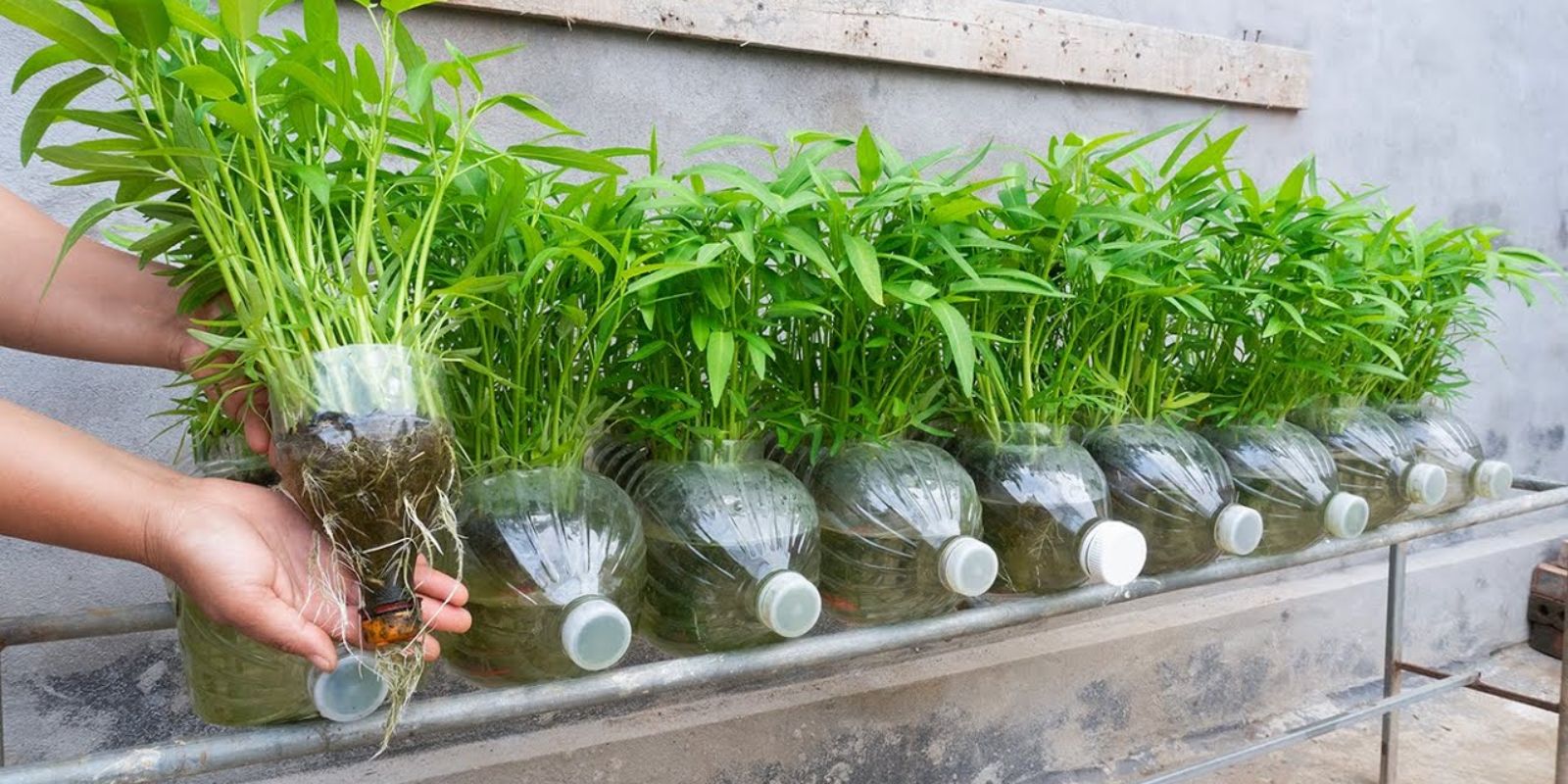Introduction
Urban gardening and sustainable living have become increasingly popular, and for good reason. Growing your own vegetables not only provides fresh produce but also contributes to a greener environment. One innovative method that has gained traction is growing spinach in plastic bottles without using traditional soil. This technique is ideal for those with limited space, such as apartment dwellers or those looking to start a small indoor garden. In this article, we’ll explore the step-by-step process of growing spinach in plastic bottles, highlight the benefits of this method, and provide tips to ensure a successful harvest.
1. Understanding the Benefits of Growing Spinach in Plastic Bottles
Growing spinach in plastic bottles offers several advantages:
- Space Efficiency: Plastic bottles can be placed on windowsills, countertops, or small balconies, making them perfect for urban environments with limited space.
- Resource Conservation: This method utilizes recycled plastic bottles, contributing to waste reduction and sustainable gardening practices.
- Soil-Free Growing: By using soilless growing mediums, you can avoid soil-borne diseases and pests.
- Easy Maintenance: The compact setup requires minimal maintenance compared to traditional soil gardens.
2. Gathering Materials
To get started, you will need the following materials:
- Plastic Bottles: Clean, empty bottles such as 2-liter soda bottles or similar-sized containers.
- Scissors: To cut the bottles.
- Drill: For making drainage holes.
- Soilless Growing Medium: Options include coconut coir, vermiculite, or perlite.
- Spinach Seeds: Choose a variety suited to your climate and growing conditions.
- Watering Can: For gentle watering.
- Labeling Materials: To keep track of planting dates and varieties.
3. Preparing the Plastic Bottles
a. Cleaning and Cutting
Start by thoroughly cleaning the plastic bottles to remove any residue or labels. Once clean, use scissors to cut the bottles in half. You can either cut them horizontally or vertically, depending on your preference and available space.
b. Creating Drainage Holes
Using a drill, make small drainage holes in the bottom of the bottle halves. Proper drainage is crucial to prevent waterlogging and root rot. Ensure that the holes are evenly spaced and large enough to allow excess water to escape.
4. Adding the Growing Medium
a. Choosing the Medium
Select a soilless growing medium that retains moisture while allowing for good aeration. Coconut coir is a popular choice due to its water-holding capacity and sustainability. Vermiculite and perlite are also effective options.
b. Filling the Bottles
Fill the bottom half of each plastic bottle with the chosen growing medium. Leave about an inch of space at the top to avoid spillage when watering. Lightly tamp down the medium to ensure it is evenly distributed and compacted.
5. Planting the Spinach Seeds
a. Sowing Seeds
Evenly sprinkle spinach seeds over the surface of the growing medium. Space the seeds about 1 inch apart to give each plant room to grow. Lightly press the seeds into the medium to ensure good seed-to-medium contact.
b. Covering the Seeds
Cover the seeds with a thin layer of the growing medium. This helps to keep the seeds in place and promotes better germination.
6. Watering and Maintenance
a. Initial Watering
Water the seeds gently to moisten the growing medium. Use a watering can with a fine spout to avoid displacing the seeds. Keep the medium consistently moist but not waterlogged.
b. Light and Temperature
Place the bottles in a sunny location where they can receive at least 4-6 hours of direct sunlight daily. Spinach prefers cooler temperatures, so aim for a range of 55-75°F (13-24°C). If growing indoors, consider using grow lights to supplement natural light.
c. Ongoing Care
Monitor the bottles regularly for moisture levels and adjust watering as needed. Ensure that the bottles have proper drainage to prevent excess water from accumulating. Remove any dead or yellowing leaves to keep the plants healthy.
7. Troubleshooting Common Issues
a. Seed Germination
If seeds are not germinating, check the moisture level and temperature. Ensure that the growing medium is consistently moist and within the ideal temperature range. If necessary, adjust the placement of the bottles to receive more light.
b. Pests and Diseases
Although soil-borne pests are less of a concern with soilless growing, keep an eye out for common issues such as aphids or mildew. If pests are detected, use organic insecticidal soap or neem oil to manage infestations. Ensure proper air circulation to prevent fungal diseases.
8. Harvesting the Spinach
a. Timing
Spinach is ready for harvest when the leaves are young and tender, typically around 4-6 weeks after planting. Harvest the leaves before they become too large or begin to bolt (flower). Regular harvesting encourages continued growth.
b. Harvesting Technique
Use clean, sharp scissors to snip off the outer leaves of the spinach plant. Leave the inner leaves intact to allow for continued growth. Harvesting from the outer leaves ensures that the plant remains healthy and productive.
9. Benefits and Final Thoughts
Growing spinach in plastic bottles is a practical and eco-friendly method that offers numerous benefits. It allows you to maximize space, recycle materials, and grow fresh, nutritious spinach without the need for traditional soil. This method is particularly well-suited for urban gardeners, beginners, or anyone looking to experiment with soilless growing techniques.
Encouragement for Gardeners
Don’t let limited space or resources deter you from growing your own vegetables. The simple and innovative approach of using plastic bottles for growing spinach demonstrates that gardening can be both accessible and enjoyable. Share your gardening journey, tips, and successes with the gardening community. Use hashtags to connect with fellow gardeners and inspire others to try this method.
🌿♻️ #SpinachGrowing #PlasticBottleGarden #SoillessGardening #UrbanGardening #SustainableLiving #GreenThumb #HomeGardening #FreshSpinach #GardeningTips #InnovativeGardening

